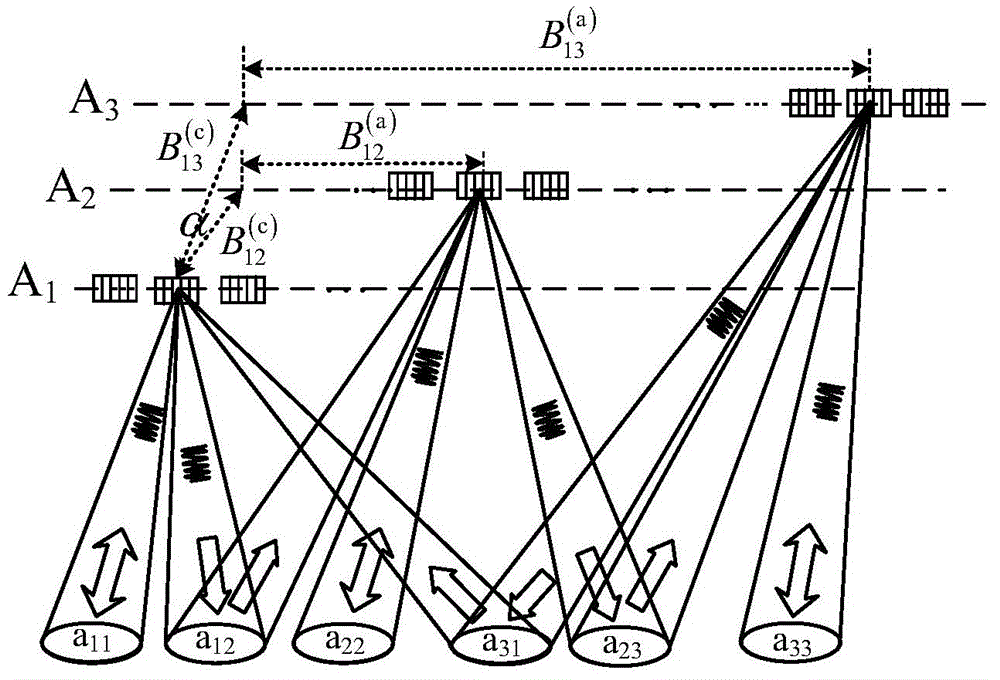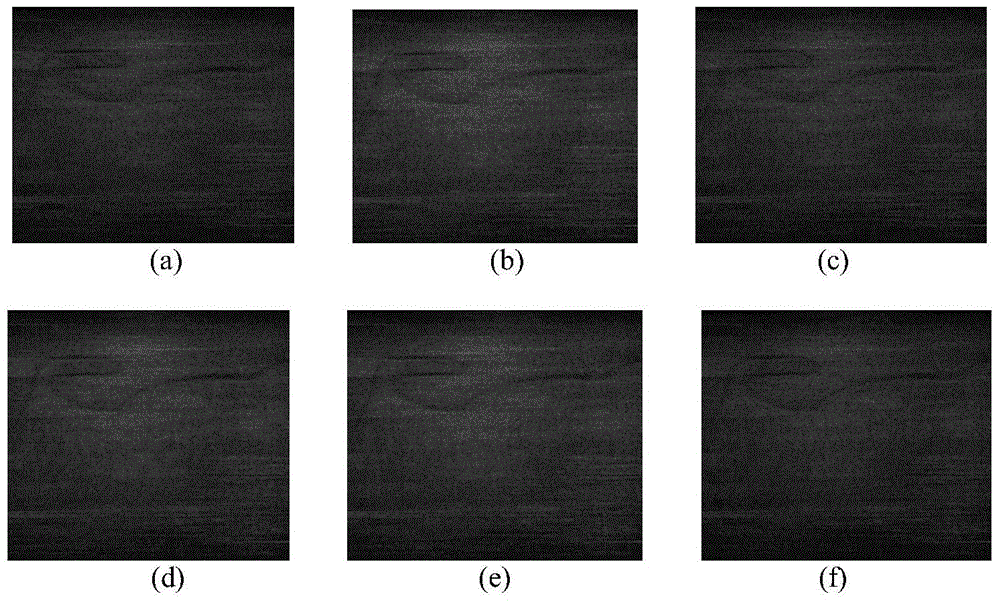Design method of space-time two-dimensional signal waveform of multi-transmission multi-receiver interferometric synthetic aperture radar
A technology of interferometric synthetic aperture and multi-transmit and multi-receive, which is applied in the field of space-time two-dimensional signal waveform design of multi-transmit and multi-receive interferometric synthetic aperture radar, and can solve the problems of reducing the performance of multi-transmit and multi-receive interferometric synthetic aperture radar, and reducing the width of the swath.
- Summary
- Abstract
- Description
- Claims
- Application Information
AI Technical Summary
Problems solved by technology
Method used
Image
Examples
Embodiment Construction
[0031] Reference figure 1 The specific implementation steps of the present invention are as follows:
[0032] Step 1. Calculate the Doppler center frequency required for waveform design.
[0033] 1a) Calculate any transmit-receive combination A separately i -A j Doppler center frequency of the transmitted signal And received signal Doppler center frequency for:
[0034] f ij Tx = 2 V sin β ij Tx / λ ,
[0035] f ij Rx = 2 V sin β ij Rx / λ ,
[0036] Among them, i=1, 2,...,M, j=1, 2,...,M, M is the number of array elements, For transmit-receive combination A i -A j Angle of launch, For transmit-receive combination A i -A j The receiving oblique angle of view, V is the speed of the radar platform, and λ is the signal wavelength;
[0037] 1b) According to the calculated Doppler center frequency of the transmitted signal and the received signal in 1a), the transmit-receive combination A is obtained i -A j The Doppler c...
PUM
 Login to View More
Login to View More Abstract
Description
Claims
Application Information
 Login to View More
Login to View More - R&D
- Intellectual Property
- Life Sciences
- Materials
- Tech Scout
- Unparalleled Data Quality
- Higher Quality Content
- 60% Fewer Hallucinations
Browse by: Latest US Patents, China's latest patents, Technical Efficacy Thesaurus, Application Domain, Technology Topic, Popular Technical Reports.
© 2025 PatSnap. All rights reserved.Legal|Privacy policy|Modern Slavery Act Transparency Statement|Sitemap|About US| Contact US: help@patsnap.com



